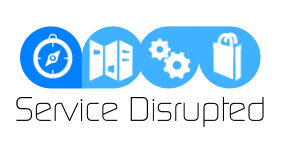Design Thinking (DT) has received quite a bit of press in mainstream business publications over the last couple of years. The narrative, for the most part, has been very positive. Conversely, there has been a number of pragmatic attempts to temper some of the wide-eyed optimism by discussing the importance of results-driven DT. In a previous article I referred to ROI as the elephant in the room. As design thinking and service design begins to gain traction amongst the C-Suite, there has been, and will continue to be, a renewed focus on metrics. For all the anecdotal success stores and “soft benefits”, metrics are the “hard” currency of the board room. At the 2013 Global Service Design Conference, Lee Sankey, Director of Design at Barclays, asked “Is Service Design more in love with process than outcomes?”. This was not meant as a criticism of service design. Rather, it was delivered as a challenge to service designers. Do they wish to be defined by service design outcomes or the service design process?
Of course, talk of results-based DT is not entirely new. The Strategic Decision Group (SDG) at Stanford have demonstrated how analytical tools such as tornado charts can be used to quantify the value of design. However, the renewed focus on DT outcomes is a welcome development as it signals DT's move from niche to mainstream. Dr. Susan Weinschenk of Human Factors International has discussed the ROI of User Experience and the Design Council have also done great work in discussing the impact evaluation of service design efforts.
I recently attended a presentation by Justin Ferrell of Stanford's famed d.school. Though the d.school has traditionally eschewed research in favour of practice, Justin mentioned that the d.school have recently begun to look for empirical evidence for the success of DT. Ironically, nobody asked them to do this before d.school became wildly successful. I suppose it was inevitable given the growth of DT and the burgeoning cottage industry that has sprung up around it.











